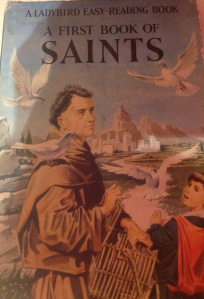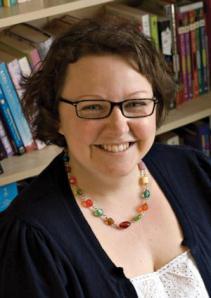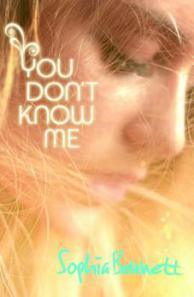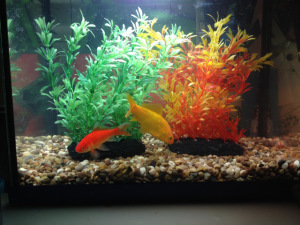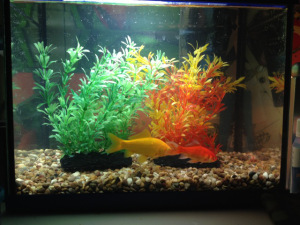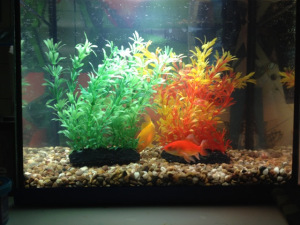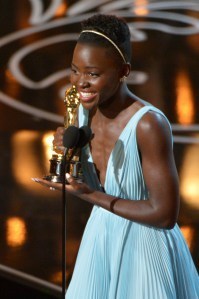Sophia Bennett's Blog, page 5
June 12, 2014
Author takeover – Much Loved Books
Today, you won’t find me here. Instead, I’ve been asked to blog-sit for Michelle at Much Loved Books, while she goes away for a week.
Michelle’s been helping me organise the Fringe event for YALC in July. Never did I think that a diagram of how to use Google Docs would have me weeping with gratitude and awe. But Michelle did one for me, and it did.
So I’ve done a little post about friendship, and you’ll find it if you click on the banner:


June 2, 2014
Castello Aragonese
Today, I’m proofing the proofs. The penultimate chapter has been binned, by mutual agreement, and I hope we made the right decision. I think we did. Later on – much later on – readers will be able to decide for themselves because the lovely Laura at Chicken House cleverly suggested that I put it up here, as a bonus extra, which I eventually will do.
Meanwhile, as I also sit down to write 2000 words about a girl in a small house somewhere in England, setting off to the 02 in London with her sister, here is a castle, in honour of Peta Jones and her big adventure:
This is the Castello Aragonese on Ischia, off the Amalfi Coast in Italy. It’s not the castle, but in this picture, it’s very close. So if you pick up The Castle in August, this is where you’ll be this summer.


May 20, 2014
And proof pages – what are those?
As I’ve mentioned before, my most popular post on this blog is something I wrote way back in 2010, called And what is line editing exactly? It’s all about palimpsests, and it describes my experiences of getting close to the end of editing my first two books.
I was discovering then, and have since become more certain, that everyone’s experience of the editing process is different. It depends on the book, the publishing house, the way your editor (or editors) like to work, and you … Much like the writing itself, it helps to know how other people do it and see it, but eventually you just have to go your own way and work it out for yourself.
I’ve just finished book 6, The Castle, which comes out in August. So far it has been through edit 1, with editor Imogen, then edits 2 and 3 (both fairly major) with editor Bella. Edit 3 was so detailed that it effectively became the line edit. Hugely painful at the time, revisiting every sentence, testing each one for the pace of the plot and the depth and development of the main character’s emotional journey – but brilliant when it came to the next stage, the copy edit (which I normally dread), because there was very little to do.
The copy editor gets the manuscript once you’ve nailed down the story and characters and, as far as you and your editor are concerned, every paragraph is nigh-on as perfect as it’s going to get. She’s there to check the manuscript objectively for internal inconsistencies, factual inaccuracies, grammatical oddities, and deviation from house style in grammar or spelling. It can be a nightmare (‘She was outside. Now she’s inside. How did she get through the door?’ ‘How can she know [insert character's name] when she’s never met him?) But this time was different. In fact, if you took out the copy editor’s preference for italics over apostrophes, which I was fine with, there were only about a dozen changes. Unheard of for me! I took the opportunity to make lots of fine-tuning textual changes of my own. And then the text was ‘finished’. Which meant it was ready for the typesetters. And then, a few weeks later, came the proofs.
Proof pages tend to come as a print-out – the first time, these days, that you get a paper package in the post, rather than an email – of the pages as they will look in the book. It set out in landscape, with two book pages to each side of A4 and it’s thrilling. You finally get to see the text as the reader will see it: so many words to a page, the chapter headings in that font, in that position … and the idea is to change as little as possible: only any mistakes that may have crept in.
My memories of other proof edits are dim, because by then I’m always onto the next book and this is something that has to be done quite quickly (the typesetters are waiting!), and hopefully without too much fuss. This one was fascinating.
I had expected to want to race through it as quickly as possible, then get back to the new book I’m writing, but in fact I enjoyed it. There had been a decent break between edits, whereas most of the others had been back to back, so I’d had a breathing space and could come to the text fresh. Several sentences that hadn’t flowed properly and had bothered me throughout the long writing process suddenly resolved themselves. Because the lines are much shorter in a printed book than they are in a Word document, I could spot repetitions I hadn’t noticed before. There were a few places where mistakes had crept in in the last edit – missing words, plural verbs with single subjects – but they were rare. Sharpened pencil at the ready, I hope I caught them all.
It wasn’t all criticism. There were a couple of places where I felt the writing actually flowed as I had always wanted it to, and where I was quite proud of it. But on the whole, wherever I looked, there was something I could tweak to make it better. Often a word, occasionally only a paragraph break, or a comma. (I tried to limit myself with comma changes. When you get to that level of detail, you know it’s time to step away.)
The last page was only two and a half lines long. That had to change. What reader wants to turn to the final page and discover she’s only got half a sentence to go? We agreed to format the chapter slightly differently so it would work. And at the very last minute, I took out the penultimate chapter completely. It was only two pages long, so not complicated to do from a typesetting point of view. And I realised, coming to it fresh, that much to my surprise it was totally redundant. Everything important it had to say was captured, better, in the chapter that followed. So out it’s gone.
The book is done now. I won’t see it again until it’s printed. And strange to think, having read the text hundreds and hundreds of times, I will probably never read it straight through again. I’ll read bits, to find appropriate extracts for readings in school visits, but never from cover to cover. For now, it’s on to book 7 …


April 28, 2014
The Curious Incident
I spend a lot of time having to tell people that I don’t have ONE favourite book. I have too many to name. I know that often what someone really wants, when they ask me about my favourite book, is just a recommendation for something to explore for themselves, or to see if our reading tastes coincide, but I end up taking the question literally and feeling stressed.
Having just finished The Curious Incident of the Dog in the Night-Time, by Mark Haddon, I know I feel a bit like Christopher Boone, its hero and narrator. I panic because instead of seeing a shelf of perhaps five or six great books, and narrowing it down to one for the sake of politeness and efficiency, I picture all the many bookshelves around my house, and at my parents’ house, and houses of friends I’ve visited, and in my student houses and in school and public libraries, which contain or contained books I’ve loved, and that have shaped me, and I know that there are many other books (unlike Christopher this time, who has a photographic memory) that I’ve adored but have forgotten, and I feel that I’m letting my reading experience down, and the authors down, and the stories down, and the person who asked me down, by not mentioning them all.
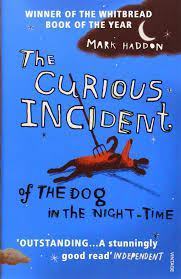 For example, the next time I’m asked I’ll probably forget to mention that The Curious Incident of the Dog in the Night-Time has instantly become one of my favourite books. It has everything I most love about reading:
For example, the next time I’m asked I’ll probably forget to mention that The Curious Incident of the Dog in the Night-Time has instantly become one of my favourite books. It has everything I most love about reading:
a very strong narrative voice from a mind that I constantly want to know better
a mystery, from page one
a sense of discovery about the world – I now know much more about Asperger’s, and maths, and Special Needs teaching (and Swindon, although to be honest I’m not sure that’s top of the list, sorry Swindon), and how the human brain works generally
a sense of discovery about me – autism is part of the spectrum of all human brain development and in some of the descriptions I recognised the bits of myself that seem to verge on autistic sometimes. There were a couple of maths problems I really loved and wanted to discuss with my husband late at night when he was trying to sleep. He wasn’t so interested.
love
kind, flawed, very real characters
pictures. (Never grew out of liking a good picture in a book. I don’t think people do.)
humour. Christopher Boone promises that there will be no jokes and yet almost every time he interacts with an exasperated adult, it’s very funny
compassion, resolution, no mawkishness, but an ending that still made me want to cry with its satisfying beauty
Of course I’m not the first person to notice what a great book Mark Haddon has written. It’s inspired other great literature, won a bunch of well-deserved prizes and sparked an award-winning play in the West End – and now I think on Broadway – which I’d very much love to see.
I’ll think of aspects of this book often. When I remember, I’ll put it in my top 10. But there are so many books in my head that, like Christopher when he’s in a crowded place, sometimes my brain can’t cope and I have to shut it down a bit. And now, thanks to this book, I have a clear image of my panic, and it’s Christopher’s panic at Swindon Station, and that makes it easier to understand and to bear. And that’s what great books do.
Probably, if you were to ask me next time, I’d say my favourite book is Thank You Jeeves by PG Wodehouse, because I do very much adore anything with Bertie Wooster in it and Wodehouse is my favourite comic literary genius and it’s my default response. Or possibly Murder Must Advertise by Dorothy Sayers, because Lord Peter Wimsey is my favourite detective and I love a good mystery, or Middlemarch by George Eliot, because it captures the painful consequences of modernity better than any other novel. But in my head I’ll be in Christopher’s head in Swindon Station, and this is why.


April 7, 2014
What, Why and How I Write: Lara Williamson
Take it away, Lara …
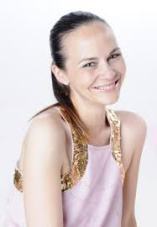 I was asked to take part in the blog tour of What, Why and How I Write by the fabulous, Sophia Bennett. Of course, I jumped at the chance because a) Sophia is a super-scribe and I was thrilled to be asked. If you haven’t read The Look yet then you’re missing out [me: *blushes*] b) I’m very happy to chat away about my writing process until the cows come home c) I love being nosy about how others write so needed to step up to the mark when I was asked. This is um… me stepping up, probably in ruby slippers. Read on to find out why.
I was asked to take part in the blog tour of What, Why and How I Write by the fabulous, Sophia Bennett. Of course, I jumped at the chance because a) Sophia is a super-scribe and I was thrilled to be asked. If you haven’t read The Look yet then you’re missing out [me: *blushes*] b) I’m very happy to chat away about my writing process until the cows come home c) I love being nosy about how others write so needed to step up to the mark when I was asked. This is um… me stepping up, probably in ruby slippers. Read on to find out why.
What am I working on?
At the moment I’m working on my second book, The Boy Who Sailed the Ocean on an Armchair. It’s not a sequel to my first book, A Boy Called Hope, but it sort of follows on in the way that both deal with families and belonging. Of course, like the first one there will be tears and laughter. And my main character will encounter many obstacles on his journey. I tend to think that no one really travels through life on a perfectly straight path getting from A to B. For most of us we do get to B but we’ve got there via Z, X, M and a few hills and valleys and that’s the same with my characters. When book two is finished I’d love to go back and take another look a book I wrote for age 7-9. It is complete but needs me to dig out a very large can of polish and a duster before it is fit for human eyeballs.
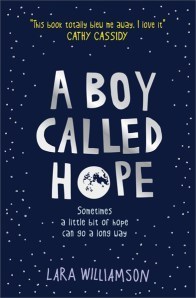 How does my work differ from others in the genre?
How does my work differ from others in the genre?
Ah, good question! What can I say other than mine differs from another in the same genre because I wrote it and it’s a story I tried to tell from my heart. I hope it’s a story only I could tell in the way that I’ve added lots of little things I’m interested in. For example: I grew up surrounded by stories of saints and I included that in the book. I also did a degree in Fashion Design and I once did an eco fashion show where we made clothing from items that were being thrown away. So I included that in the book too. In the book it’s called PEE (Project Eco Everywhere) but thankfully it wasn’t PEE in real life. Anyone that knows me knows I have a love of glitter and sparkly things which I think started when I saw the ruby slippers in The Wizard of Oz. So, yes, you’ve guessed it – there is more than a passing nod to The Wizard of Oz and rainbows in A Boy Called Hope too. Really, it’s just the little things, the quirky details that make it unique to me.
I’m all about the laughter and the tears. In a nutshell I just write the type of book I would enjoy myself: one that makes me laugh but might make me cry too. No big mystery. (However, one day I might quite like to write a big mystery too.)

This is my notebook for A Boy Called Hope. It makes me smile because it mentions ‘the journey’ ‘purpose’ ‘intention’ and ‘dreams’ and being published was all those things and more. Although the word HOPE didn’t get a mention on the cover I filled every page inside with it. In the end this was one big notebook of hopes and dreams. :-)
How does my writing process work?
I work five days a week and try to keep the weekends free. But if I have to I’ll work on Saturday mornings too. To be honest though, I don’t completely switch off because I could be lying in bed and a character will pop into my head and begin to have a conversation with me about something in the book. Usually I like to write to a target but some days I fall short. Some days I write more. It’s just swings and roundabouts, really. I tend to have a vague idea in my head with the plot but I don’t map it out perfectly because a little part of me is very much like my main character. I know the beginning and the ending but I’m going on a journey and I want to be surprised or find myself taking a turning I’d never expected. Perhaps it means I’ll travel towards a dead end but I can always turn back and find the path again having learnt something new. The creativity doesn’t stop with my writing either. There is always a place in my notebook for oodles of doodles!
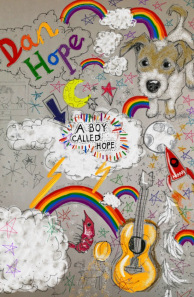 Thank you again to Sophia for allowing me to put this on her wonderful blog page.
Thank you again to Sophia for allowing me to put this on her wonderful blog page.


March 31, 2014
The Blog Tour: What, Where and How I Write
I was tagged to take part in this on-going tour by Keris Stainton and I said yes because I think it’s a great idea – I’m always fascinated to know about what authors are up to behind the scenes, aren’t you? – and because Keris (author of Della Says OMG! and the up-coming Reel Friends Starring Kitty) is a fantastic writer friend and basically I do whatever she tells me.
I’m waiting for the copy edits to come back from my publishers for my new book, The Castle, which comes out in the summer. Meanwhile, I’ve been deciding between two ideas as to what to write next. I did lots of school visits for World Book Day and, based on the advice of my insta-focus groups, I’m going to work on the love story idea. There will be a hot boy (a very hot boy), and a girl, and a fabulous, falling-apart old house.
I haven’t written a classic love story before, because the idea for one hasn’t come to me before, but now I’ve had the idea for this one I can’t wait to get going.
2. How does my work differ from others in the genre?
That is a very tricky question. I think I risk being shot down in flames here, but here goes …
I write books about things that many girls are interested in (not all, I know!) such as fashion, modelling, music and what it’s like to be famous. These are all described a lot in YA fiction, but not examined as much as I think they should be. I like to peer behind the scenes of all these worlds and find out what it’s really like, what’s involved, what sacrifices do you have to make to be successful, what talents do you need?
I think my readers are interested in more than just the superficialities of fashion and fame, and deserve to know about the hard work, the obstacles and the pitfalls that make every so-called charmed life more difficult than it looks. So my books are funny, but serious, too. Yes, I’ll go into the niceties of couture dress design or doing a photoshoot, but I’ll also talk about child labour in illegal factories, or the manipulation of young models by rogue photographers, or the trolling of celebrities online.
I write a lot about family and friendship too, and in both cases not everything goes as my characters might want or expect. I’d like to think my books are accessible, but intriguing. And I hope they’re planting ideas for my readers to think about later.
Overall, I’d say I write accessible contemporary coming-of-age YA literature … with an edge.
Because these are the things that interested me when I was 14, and I still find these worlds so fascinating in the twenty-first century that I can’t seem to tear myself away from them. One day I’d love to go back to writing mysteries and detective stories, which is what I started out doing (not that any of those got published). But not yet!
4. How does my writing process work?
It’s always evolving, but there are some constant elements to it. I think about the next book while I’m writing the one before, so usually I have several months for the story to come together in my head. It will emerge from a small number of competing ideas: over time, one will stick. The basic story arc comes quickly and generally doesn’t change much, but the details of characters and situations will emerge from life around me: places I visit, people I read about, things that inspire my imagination.
However, in this case I’ve been thinking about a different story, so I’ve had to develop my ideas on the new book very rapidly. I’ve been reading relevant autobiographies and books with the kind of atmosphere I’m after, and looking up locations on the internet and in magazines. It’s all coming together and I’m madly writing notes on post-its and little bits of square paper, which I’m sticking on themed sheets. I’m also – for the first time, although I’ve meant to do this for ages – using the largest sheet of card I could find to act as my storyboard, and sticking post-its with plot highlights onto it so the story on the sheet matches the one in my head.
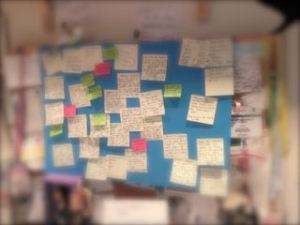 For Threads, I kept a kind of scrapbook of inspirational fashion designs and I think I’ll do the same sort of thing with my themed sheets (locations, people, highlights …), because all that paper is getting out of hand, and I have lots of pictures now too.
For Threads, I kept a kind of scrapbook of inspirational fashion designs and I think I’ll do the same sort of thing with my themed sheets (locations, people, highlights …), because all that paper is getting out of hand, and I have lots of pictures now too.
I’ve written a one-page synopsis as a pitch for my agent, and now I’m working on a 3-4 page description of the main plot points. It’s not quite a chapter breakdown but it’s close. It’s useful for showing me where the baggy bits are, and where there might be gaps.
Once I’m ready to start, it will take me AGES to get the voice. It always does. I’ll become convinced I’ve made a hideous mistake and nearly give up. Only my love of the story will make me keep going. Eventually I’ll find it and I’ll write the first draft for 3 or 4 months, aiming to write 2-3,000 words a day, but with lots of rewriting from day to day. Then the top-to-toe rewrite, when almost every scene gets a radical makeover to tighten it and bring it to life. Then the other rewrite. Then the edits … Overall, the process will take me about a year.
Oh yeah, and while I’m doing that, my husband and I will be taking the kids to school, managing the house, trying to get out and about in London, keeping up with friends and doing all the usual basic living stuff. And the next idea will be forming …
Next week, the lovely Lara Williamson will be posting her own What, Why and How on my blog, here. Lara was one of my early readers for The Look and now her own debut, A Boy Called Hope is out, and has just been shortlisted for the IBW Book Awards. Hooray!
Lara Willamson


March 18, 2014
Writing about writing
The post that is most regularly read on this blog is one I did in 2010, called What Is Line Editing Exactly? In my ten years of trying to get published, and obsessively reading the Writers and Artists Yearbook, I thought I’d imagined every aspect of writing, but in fact there was so much I didn’t know and couldn’t guess. Line editing was just a small part of that.
I imagined my writing signature in books (useful – have to do that a lot) and one day meeting fans (not so much of an issue – I’m a writer, not Angelina Jolie). I imagined how my young children would play, adorably at my feet as I wrote reams of prose at my kitchen table (hahaha – my kitchen’s too small for a table and young children tend to climb over you as you write and get honey on the ‘M’ key so it sticks forever, or hide rude words in your manuscript when you’re not looking, so you end up seeking refuge anywhere they’re not). I imagined the film deal and the clothing franchise (still waiting …). I did NOT ever, even once, imagine my books being translated into German, or Japanese, or French or Dutch, which turned out to be one of the best bits. I knew I desperately needed an editor, but I pictured long lunches over a glass of white wine, not Track Changes and agonising over jokes that didn’t work. Basically, I didn’t really have much of a clue what ‘being a writer’ would be like. And as it turns out, that doesn’t matter at all. Once you get there, like everything else in life, you just get on with it.
While I was doing my most intense imagining all this wrong stuff, or trying to work out what the market trends were in UK fiction, I tended to daydream about it more than, y’know, doing the writing. Then one day I somehow managed to realise that this was a bad thing, stop obsessing about the detail of a life that might never happen, and just write. That was one of the best decisions I ever made. So if you’re reading this in your daydreaming phase, promise yourself that for every thirty minutes you spend imagining, you spend thirty minutes writing your story. At least thirty minutes. You won’t regret it.
Having said that, the life of a writer fascinates me just as much now as it ever did. Yesterday, my fellow Chicken House author Rachel Ward wrote a great piece on the 5 things she’s learned since she got published, all of which I agree with. I recommend you read it on Author Allsorts, here.
And not too long ago Non Pratt, an editor and debut children’s author, wrote a fabulous guide to being edited, funnily enough, also on Author Allsorts – a truly great blogging resource for writers, which I also recommend.
Look them up! Then get writing. Because none of the rest of it can happen until you do.


March 13, 2014
Another excuse for not writing
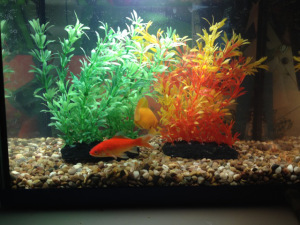 My first and best excuse for not writing recently has been World Book Day. Check out my last post on this blog, and also my most recent post on the website, here, for where I’ve been, what I’ve been up to, and some of how it looked.
My first and best excuse for not writing recently has been World Book Day. Check out my last post on this blog, and also my most recent post on the website, here, for where I’ve been, what I’ve been up to, and some of how it looked.
My other excuse is that, of the two stories swirling round in my head, I haven’t been sure which one to write. One of the handy things about meeting hundreds of girls and boys, lots of librarians and a few booksellers over the last few days is that I’ve been able to ask their opinion. Good news – they like both stories. Bad news – they want me to write both, which isn’t super-helpful right now. However, they want me to write one slightly sooner than the other, so I think I know what I’m doing now.
Also, I’ve been quite distracted over the last couple of days thinking about the characters for the slightly-favourite story, and the setting, and just exactly who is going to die and how … and that’s always a good sign. I think if I don’t sit down and write the story, it will just write itself in my head anyway, like Threads did, so I might as well get it on the computer while it’s there.
My other other excuse for the not-writing has been fish.
2 goldfish.
As named by my 7 year-old, who has not, sadly, inherited his mother’s fascination with names. If I’d been him, I’d have called them Captain Rex and Commander Cody (obviously), but he wasn’t convinced. He’s gone for Goldie and Fishie. (One is gold, and one is … fishy.) So there we go.
I LOVE THEM! I haven’t had fish since Bit and Bot when I was 7 (OK, so I wasn’t quite so into names then either) and I’d forgotten how mesmerising they are. Goldie is the big bruiser – not super-intelligent, but very fond of his food. Indeed. Fishie is the clever little Artful Dodger of the team, always the first to spot new fish flakes, and the most agile round the tank.
When they’re hungry, they swim super-slow, conserving their energy and looking like sharks on the prowl. Very very small sharks on the prowl among plastic scenery. When it’s feeding time, they go for it. They’re up, they’re down, they’re in and out of the greenery, they’re eating the stones at the bottom and anything that might possibly be food attached to the glass of the aquarium. Fishie gets there first, then Goldie follows.
As you can tell, I’ve been watching them for hours.
When I haven’t been watching them, or in schools talking, or daydreaming about stories, I’ve been listening to the radio, and walking in the spring sunshine, and reading other people’s blogs. I’ve discovered Fleur Hitchcock, who seems to do the sort of things I do and like the sort of things I like. I recommend you check out her writing blog here. It’s brilliant! I think the new debate about how we have a human need to make things is really important. Fleur describes that so well.
But I must get to work now. There’s a boy in my head who, quite unfortunately, needs to die …


March 5, 2014
World Book Day 1 – Hillview School
So, we started with fairy tales. Me and 12 Year 7s. We talked about our favourite ones, then we picked one and tried to write it quickly. (Well, the girls did. I just listened to the fabulous sound of biros tapping against paper on a hard table.) Then we personalised them. Oh, they were getting good by the time we had to stop …
Then we designed book covers. About four girls came up with titles that were better than anything I’ve thought of. I may have to steal one or two for future stories.
Then I talked about me. With pictures. Me and books. How I became a writer. Where I get my ideas from. How my writing life has been influenced by Harry Potter.
And in the meantime, I got to wander around Hillview School. Wow it celebrates the arts. My favourite bit was the textiles department. Which is Nonie. Heaven. It really was like walking around a Threads set. Crow would have cried with happiness. I took lots of pictures.
Thanks for having me, Hillview, and especially Sophie, the magnificent librarian who worked so hard to make it happen. I really enjoyed the day.
If you live near Tunbridge Wells, look out for the Hillview pop-up Oxfam shop, coming soon. They’re in the middle of customising the clothes and I promise they’ll be great. Meanwhile, here’s a little bit of Threads, alive and well and doing a BTEC at a school near you, now …















March 4, 2014
Oscars crush
And while we’re on the subject of crushing …
The Oscars had many moments that I wanted to catch over and over on YouTube. There was the pizza, and the selfie, and all those British accents accepting awards for technical categories in Gravity, because we ROCK at technical stuff in films. Steve McQueen jumping up and down. Jennifer Lawrence just being Jennifer Lawrence, because she can’t help being adorable, even when she’s falling over a traffic cone. (Glad I’m not the frocked-up girl she landed on, though.)
But best of all, of course, was Lupita Nyong’o. For designing the pale blue Prada dress that made every fashion commentator feel like a princess just watching her. For saying the colour reminded her of Nairobi, and making #nairobiblue trend on Twitter. For out-shimmying Pharrell from the front row, while he sang ‘Happy’ to her.
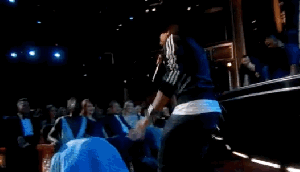 (My first gif, by the way. Go me! I can gif!)
(My first gif, by the way. Go me! I can gif!)
And most of all, of course, for one of the most gracious acceptance speeches in the history of the Oscars – for Best Supporting Actress. Here are my favourite three lines from that speech:
“It doesn’t escape me for one moment that so much joy in my life is thanks to so much pain in someone else’s.”
“I’m certain the dead are standing about you (Steve McQueen) and they are grateful and so am I”.
“When I look down at this golden statue, may it remind me and every little child that no matter where you’re from your dreams are valid. Thank you.”
Later, accepting the Best Film Oscar, Steve McQueen repeated his statement that there are still, today, 21 million people trapped in slavery in the world. 21 MILLION. I’ve been thinking about it a lot recently because domestic slavery features in my new book.
So do children who dare to dream. That’s what good children’s books do, I think: they tell their readers that their dreams are valid. It’s why reading with children, and to children, and giving them the gift of reading is so important.
And when you’re reminded about it by a girl in a blue princess-dress, accepting the highest award for her profession and about to have her life changed forever, you know it must be true.





